Bamboo and rattan furniture is beautiful and can give your home a relaxed, outdoorsy vibe. It's also relatively durable as long as you care for it correctly. One of the most important parts of caring for your bamboo or rattan furniture is cleaning it. What are the necessary steps for cleaning it? We've researched this question and have come up with the answer.
- Clear off loose dirt
- Wash it with soapy water
- Rinse it thoroughly
- Let it dry completely
- Apply a lubricating oil
This process should be followed closely so that you don't damage your furniture. Don't worry: we'll explain each step in more detail, give you product recommendations, and answer other related questions. Here we go!
![Handcrafted Bamboo Rattan furniture. Bamboo Rattan products, How To Clean Bamboo And Rattan Furniture [5 Easy Steps!]](https://homedecorbliss.com/wp-content/uploads/2021/04/Handcrafted-Bamboo-Rattan-furniture.-Bamboo-Rattan-products-How-To-Clean-Bamboo-And-Rattan-Furniture-5-Easy-Step.png)
What is the difference between bamboo and rattan furniture?
Before we get started, let's make sure we're on the same page about what your furniture is made from. Both bamboo and rattan are used to create the type of furniture called "wicker" and are often incorrectly used interchangeably.
Bamboo and rattan are both a plant with strong, beautiful wood. However, they are grown differently: bamboo grows straight up out of the ground, while rattan is a vining plant. Caring for the furniture is similar no matter which one it is.
How can you tell which wood is used in your furniture? Here are a couple of methods.
- Bamboo is hollow, while rattan is solid.
- Rattan can be bent and molded, while bamboo is too strong to be curved.
In general, if the furniture is made out of long, strong strings, it's probably made from the inside portion of the rattan plant. If it's hollow and pole-like, it's made out of bamboo.
To further complicate matters, there are many synthetic bamboo or wicker furniture pieces available. These pieces are made out of plastic and are more durable than authentic bamboo or rattan.
Cleaning Bamboo and Rattan Furniture
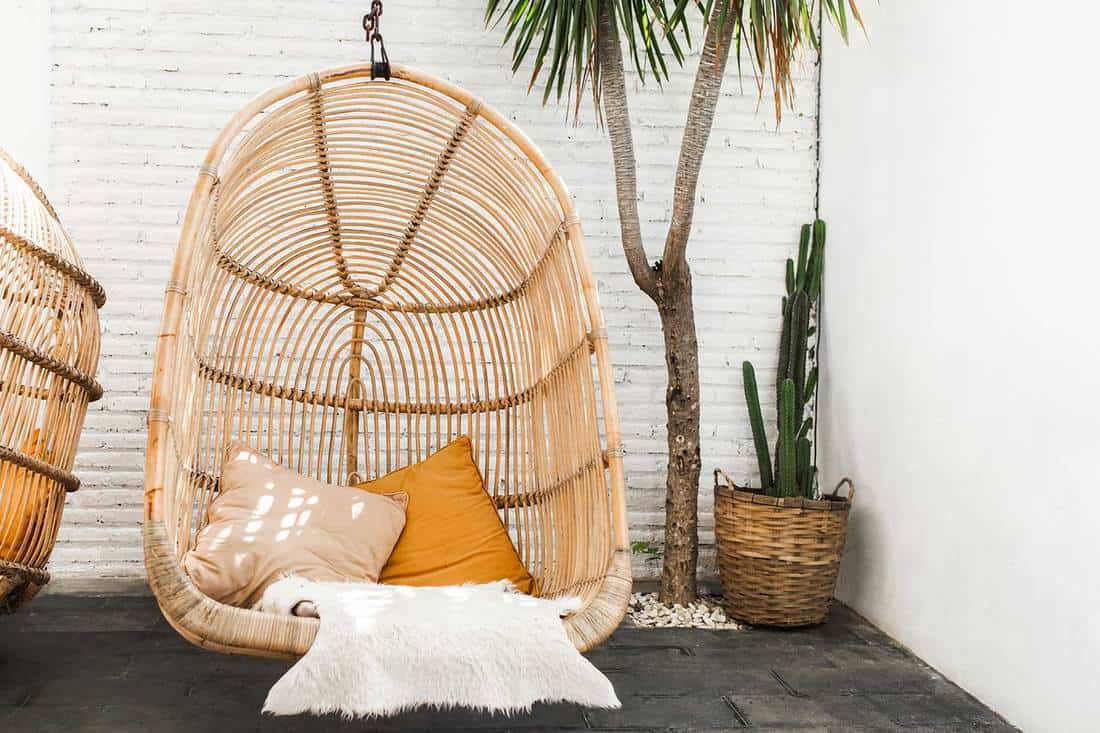
We may include affiliate links and curated AI content to highlight top design styles.
Necessary materials:
- Microfiber towel or rag
- Or vacuum cleaner with a brush attachment
- Compressed air (optional)
- Dish soap
- Oil-based soap (optional, effective on mildew)
- Ammonia
- Warm water
- Second clean rag
- Lubricating oil
- Boiled linseed or wood furniture oil
1. Clear off loose dirt
The first step is the simplest: get rid of the excess dirt and dust. You can use a vacuum cleaner with the brush attachment, a microfiber towel, a soft brush, or another dusting tool. The goal of this step is to get rid of surface-level debris.
Are there little nooks and crannies that you can't reach with your brush? Use a bottle of compressed air to blow out the dust and dirt, or use a toothbrush to remove as much as you can.
Click here to view this compressed air on Amazon.
You should complete this step of the process often, at least once every sixty days. If you do that regularly, the rest of the process will be easier, and your furniture will last longer.
2. Wash it with soapy water
Next, clean the furniture with warm, soapy water. You can use regular dish soap, mixing it around in a bowl or bucket to create suds. For extra power, add up to two teaspoons of ammonia to the mixture.
Mildew can sometimes be a problem for bamboo or rattan furniture, especially those exposed to elements or can't dry completely. If that's the case with your furniture, you'll need to use a stronger substance than simple soap. For mildew and other grime, use a mild oil-based soap to scrub it away.
Or, you can make your own homemade cleaning solution. Mix 1/4 cup of ammonia and two tablespoons of vinegar in a quart of warm water.
Click here to view this oil soap on Amazon.
Use a soft brush or a rag to wipe it down. If you use a rag, make sure to thoroughly wring it out before each application. Use gentle pressure, taking care not to damage the wood by pressing too hard.
If you're dealing with mildew and it doesn't go away with your everyday tools, try using a hard wire brush. Be gentle, and only scrape at the mildew spots.
3. Rinse it thoroughly
Once you're satisfied that you've cleaned the furniture, rinse off the soap and other substances. Use a fresh bucket or bowl of warm water and a clean rag. Again, wring the rag out to get rid of excess water.
Can you pressure wash bamboo furniture? Rattan?
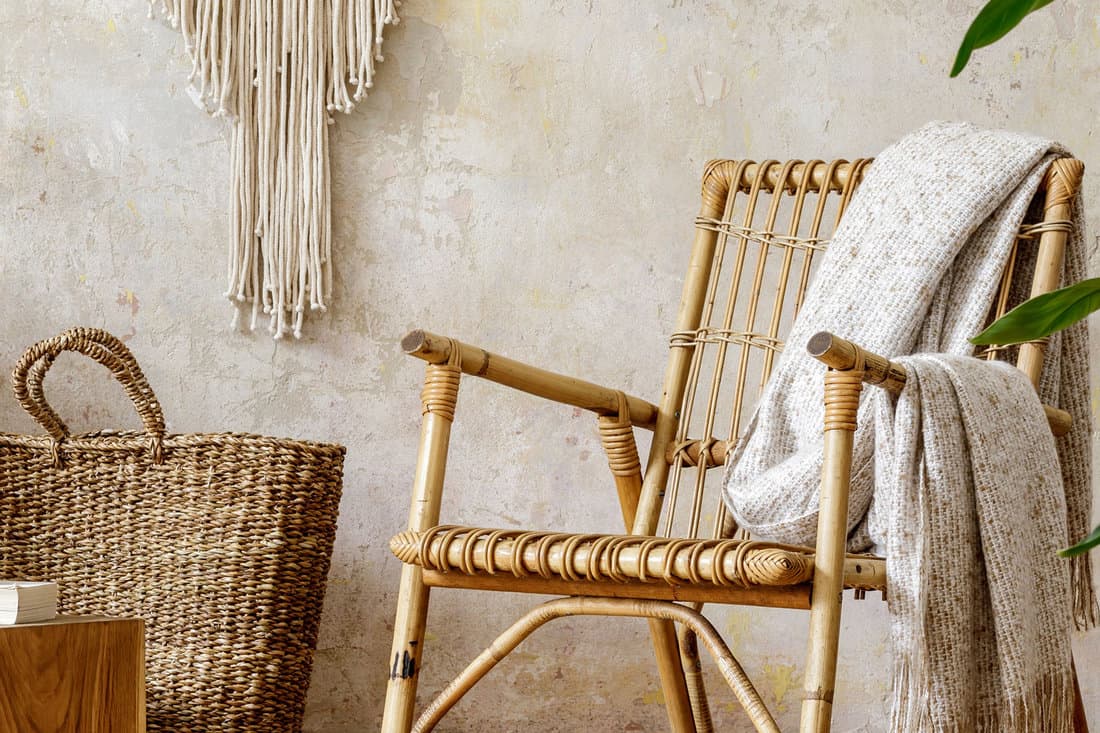
Do not use a pressure washer on any furniture made out of genuine, natural bamboo or rattan. These woods are covered in lacquer or protective material that a pressure washer can easily destroy. You also might tear away part of the outside layer of wood.
On the other hand, synthetic bamboo or rattan -- usually designed to be used outdoors -- can be pressure washed from a safe distance. These pieces are designed to be exposed to the elements, including wind and rain.
Curious about outdoor wicker furniture? Check out this article for details: How Long Does Outdoor Wicker Furniture Last?
4. Let it dry completely

As we mentioned above, mildew can be a problem for bamboo and rattan furniture if it doesn't dry properly. Keep the furniture outdoors while drying if possible, or at least in an area where there's air movement.
Avoid using it for several days to make sure that it's completely dry. Often, moisture can seep into the furniture's fibers, and using it before it's totally dry can increase the negative impact of the water.
5. Apply a lubricating oil
Finally, when you're confident that your furniture is completely dry, apply lubricating oil. Oiling your bamboo furniture is important because it keeps the plant fibers conditioned and lubricated. Otherwise, the fibers can become brittle. Even though oiling the furniture adds an extra step to the process, it will also add to your furniture's life.
What kind of oil do you use on bamboo furniture?
Any furniture oil that's designed specifically for bamboo will work to lubricate your bamboo furniture. Most of these products are made out of mineral oil, often with some extract added for scent. Here are a couple of examples.
Click here to view this bamboo oil on Amazon.
Click here to view this bamboo oil on Amazon.
Or, you can use boiled linseed oil for a more natural approach.
Click here to view this oil on Amazon.
Whatever product you use, make sure to follow the instructions on the bottle.
How long does bamboo furniture last?
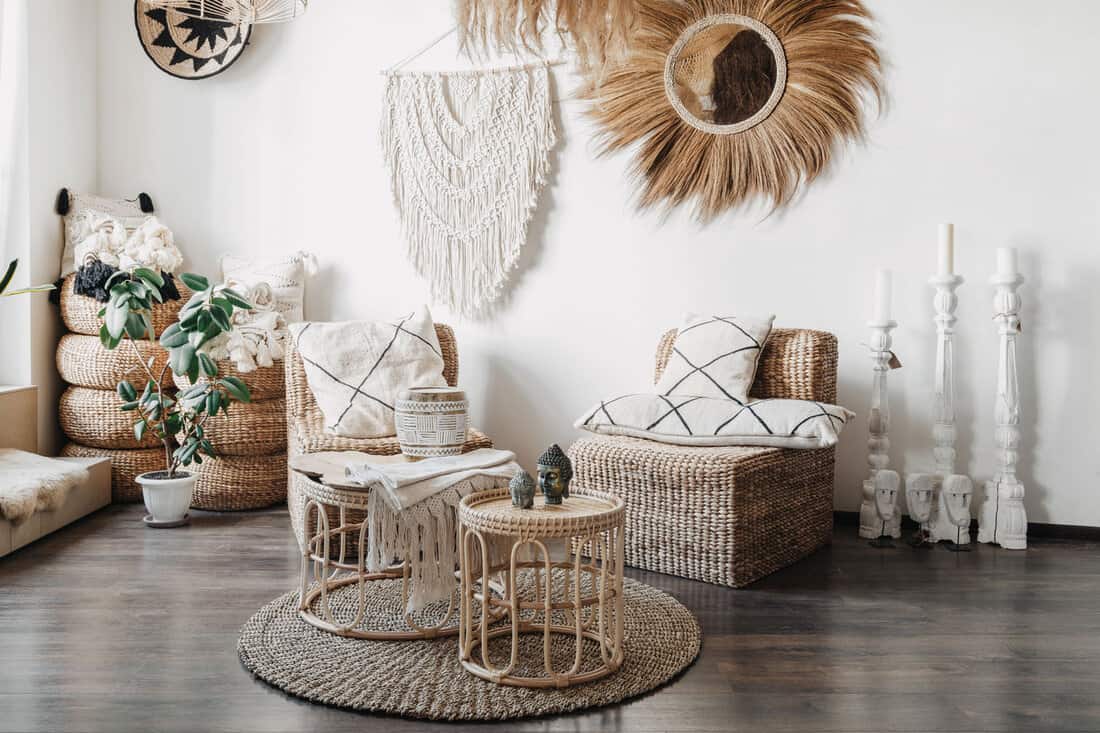
As long as you take care of your bamboo furniture, it can last twenty to thirty years without breaking down. Bamboo is strong, durable, and hard. In fact, it can last longer than most other types of wood.
Make sure that if your bamboo furniture gets wet that it dries quickly and properly. Also, check it frequently for mildew and bugs, as these can deteriorate the structure.
How long does rattan furniture last?
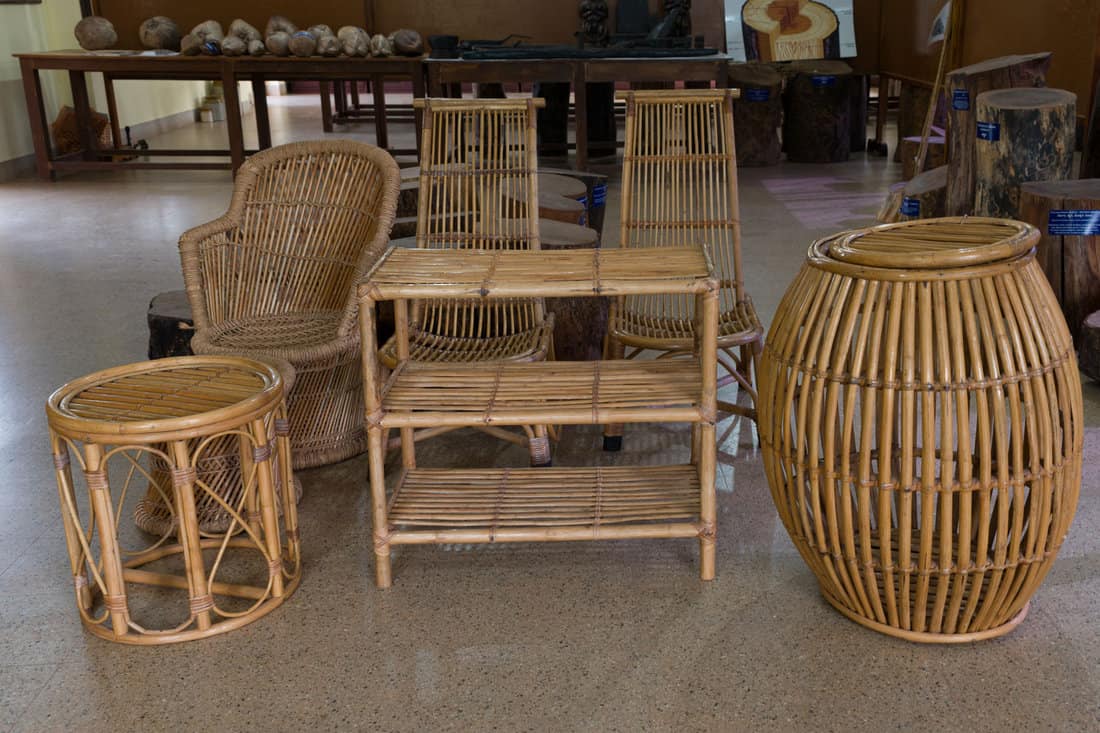
Rattan furniture can last for several decades if taken care of properly. While a natural plant, Rattan is often covered with a synthetic, waxy material that protects it from the elements. Even without the cover, rattan is durable and flexible. If you make sure that the furniture is treated correctly, you can expect it to survive for many years.
How do you restore faded rattan furniture?
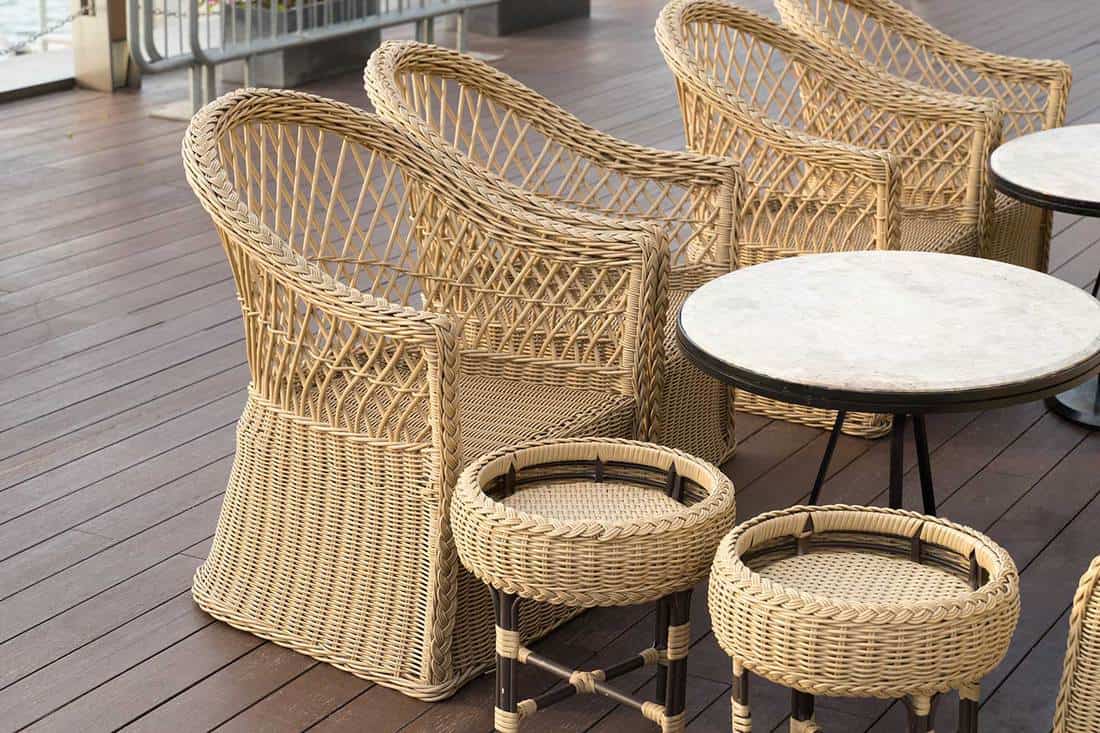
When restoring faded rattan furniture, the first tactic is to clean it deeply, using the steps we've described above. Sometimes furniture can look discolored or faded when it's dirty, so a good cleaning will make it look better immediately.
After cleaning it, you can try oiling it with furniture polish or lemon oil. This might help it look shinier and healthier than before.
If the furniture still looks faded or dull, it might be time to re-varnish it. Varnish is a liquid material that you can apply to the rattan that helps protect it. The varnish dries when exposed to the air and forms a layer to keep out dirt and moisture.
Want to make your furniture darker? You can purchase a tinted varnish, which acts as a combination of wood stain and varnish. You can pick out the color of the varnish tint at a local hardware store.
Before applying the varnish -- tinted or not -- clean the rattan completely using the steps described above. Let it dry thoroughly for several days. Then, use a paintbrush or rag to spread the varnish following the instructions on the container.
For more details on restoring wicker furniture, read this article: How to refurbish a wicker chair?
In Closing
If you take care of your furniture correctly, you can assume it will last for years. Pay attention to mildew spots and evidence of bugs, and take care of those issues quickly.
Good luck, and happy cleaning!
![Terrace of a home with rattan furnitures, How To Clean Bamboo And Rattan Furniture [5 Easy Steps!]](https://homedecorbliss.com/wp-content/uploads/2021/04/How-To-Clean-Bamboo-And-Rattan-Furniture.png)








